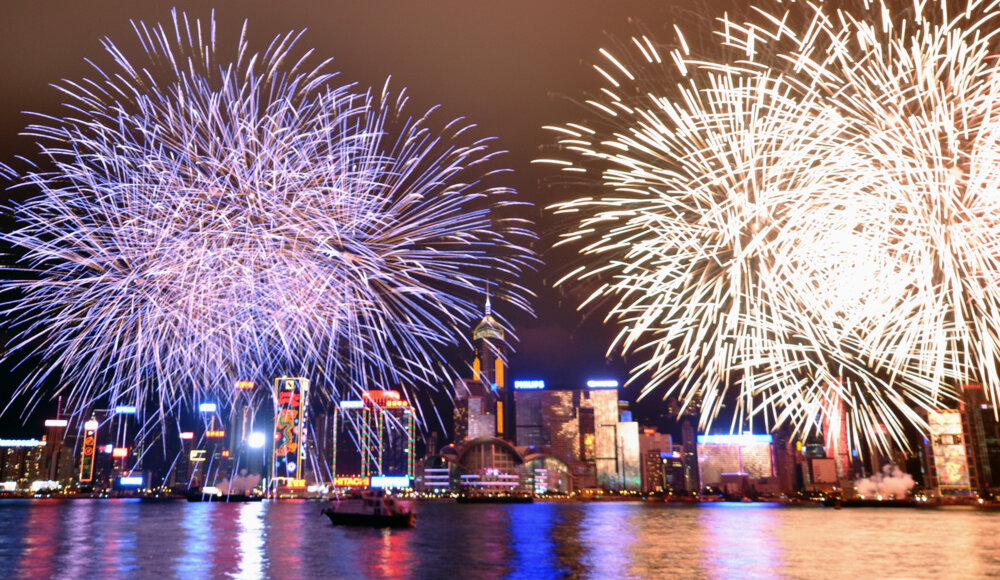Historical Background
The historical roots of Chinese New Year delve into the ancient practices and spiritual beliefs of Taoism, deeply intertwined with the rhythms of lunar cycles and agricultural life. Before the establishment of the festival, Chinese communities celebrated the abundance of autumn, distinct from the Mid-Autumn Festival, with practices chronicled in the Classic of Poetry during the Western Zhou period. These rituals, from cleansing millet-stack sites to feasting on lamb, foreshadowed the elaborate celebrations of Chinese New Year. The earliest recorded New Year festivities emerged during the Warring States period, with rituals like "Big Nuo" in the Qin state, which evolved into house cleaning before the New Year, symbolizing the purging of old fortunes and embracing new blessings.
Throughout China's dynastic history, New Year celebrations evolved alongside Taoist and religious beliefs, with the Han dynasty elevating the commemoration of the new year to honor ancestors and invoke blessings for longevity and prosperity. The Jin dynasty saw the tradition of shousui on New Year's Eve, guarding against malevolent spirits, while the Tang dynasty introduced bai nian tie, fostering unity and camaraderie through New Year's greeting cards. The Song dynasty refined customs with Chunlian and the practice of giving money to children, symbolizing fortune and prosperity.
Even during the Qing dynasty, New Year's Money was bestowed upon children as tokens of blessings. However, the 20th century brought challenges, with attempts to change the date of Chinese New Year and the Cultural Revolution disrupting traditional celebrations. Despite these upheavals, the resilience of Chinese culture and community persevered, preserving the essence of Chinese New Year as a time of renewal, unity, and spiritual reverence for the cyclical nature of life.

The largest Chinese New Year parade outside Asia, in Chinatown, Manhattan, © Patrick Kwan, via Wikipedia
Themes and Symbols in the Art of Chinese New Year
Red Packets: These traditional envelopes, filled with money, symbolize blessings, prosperity, and protection from evil spirits. Given by married couples or elders to unmarried juniors or children, they embody wishes for luck and good fortune.
Gift Exchange: Alongside red packets, small gifts like fruits, cakes, and candies are exchanged between friends and relatives. These gifts, usually wrapped in red or gold paper, symbolize good luck and are commonly given during visits.
Markets: Vibrant New Year markets offer an array of festive products, from flowers and toys to clothing and fireworks. These markets facilitate gift shopping and home decoration, echoing the spirit of anticipation and celebration.
Fireworks: Originating from ancient practices to ward off evil spirits, fireworks have become a symbol of joy and festivity. Their deafening explosions mark the arrival of the New Year, symbolizing the triumph of light over darkness.
Music and Films: Traditional songs like "Gong Xi Gong Xi" and Chinese New Year films serve as cultural expressions, fostering a sense of identity and community. These artistic mediums capture the essence of the holiday, celebrating tradition and renewal.
Clothing and Family Portrait: Wearing new clothes symbolizes new beginnings, while family portraits capture the essence of togetherness and kinship. These customs reflect the importance of familial bonds and collective celebration.
Symbols and Ornaments: Iconic symbols like the fu character, lanterns, and dragon dances embody wishes for blessings, happiness, and prosperity. Ornaments such as Nianhua (colored woodblock prints) and flowers carry symbolic meanings, ushering in positive prospects for the New Year.
Spring Travel: he tradition of families gathering for reunion dinners underscores the importance of familial ties and shared experiences. Spring travel, marked by the Chunyun period, symbolizes the collective journey home and the anticipation of new beginnings.
In Contemporary Art
Contemporary Chinese art, evolving since the 1980s, encompasses various mediums like painting, film, photography, and performance. Despite past censorship, the government now shows greater tolerance, yet limitations persist for some artists. Renowned figures include Ai Weiwei, known for his provocative installations, and Pablo Guillamon, whose photography captures diverse cultures and human stories with depth and nuance.
Han Yajuan's Fashion Ensemble: Han Yajuan's paintings exemplify the fusion of contemporary Chinese art with pop culture and social commentary. Her vibrant canvases, depicting pixie girls immersed in fashion and consumerism, reflect the aspirations and contradictions of modern Chinese society. Through her art, Yajuan celebrates the exuberance of youth while subtly critiquing societal norms and gender roles.

Han Yajuan, Fashion Ensemble. Oil on canvas, 2010. © Topjur01, via Wikipedia
Pablo Guillamon's Photography: Guillamon's photography transcends mere visual documentation, offering profound narratives that delve into the human condition and societal landscapes. Each photograph serves as a window into diverse cultures and human experiences, prompting introspection and reflection. Through his lens, Guillamon captures the essence of life's complexities and intricacies, inviting viewers to engage with the deeper layers of existence.
Pablo Guillamon, Chinese New Year-London, 2023
Casey Latiolais's Trump Rooster Sculpture: Latiolais's larger-than-life sculpture of Donald Trump as a rooster is a whimsical yet pointed commentary on contemporary politics and cultural exchange. Set against the backdrop of the Chinese zodiac, the sculpture embodies the artist's satirical take on global events and power dynamics. By intertwining political symbolism with traditional iconography, Latiolais challenges viewers to reconsider the intersection of politics and culture in a rapidly changing world.
Yue Zeng's "Lion Dance" Abstract Oil Painting Series: Zeng's abstract interpretation of the traditional lion dance encapsulates the fusion of heritage and contemporary artistic expression. Through bold colors and dynamic compositions, Zeng captures the energy and symbolism of this cultural ritual, offering a fresh perspective on a time-honored tradition. By reimagining the lion dance through abstract art, Zeng invites viewers to appreciate the enduring relevance and vitality of Chinese cultural heritage in the modern world.
Yup Zeng, Lion Dance Red, 2022
Chinese New Year stands as a testament to the rich tapestry of Chinese culture, blending ancient traditions with contemporary expressions of art and celebration. From its origins in ancient rituals and customs to its vibrant manifestations in contemporary art, Chinese New Year embodies the enduring spirit of renewal, community, and cultural heritage. As artists continue to explore new themes and styles, their work serves as a reflection of the evolving dynamics of Chinese society and its interconnectedness with the global world.




 Selena Mattei
Selena Mattei